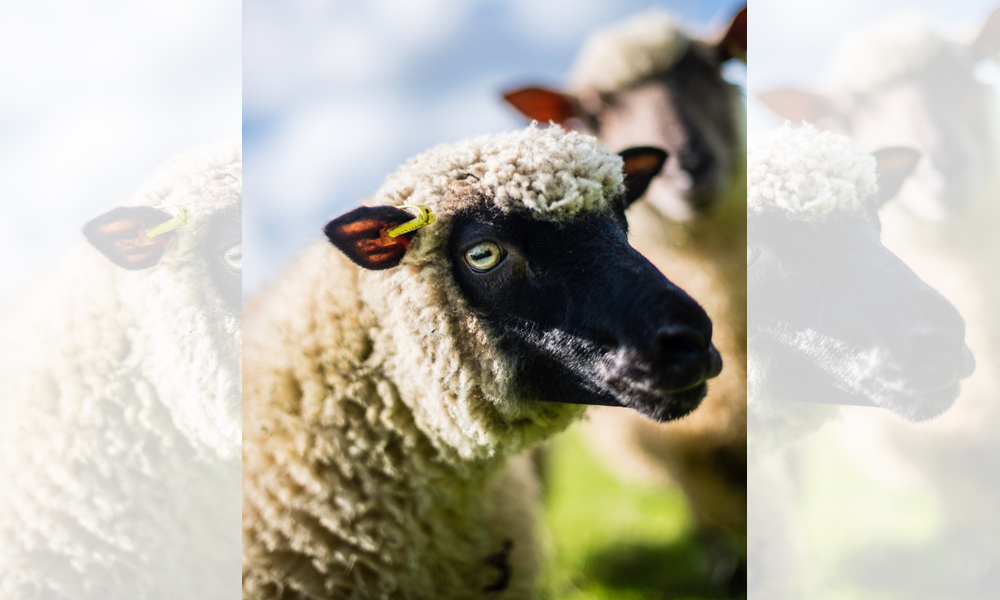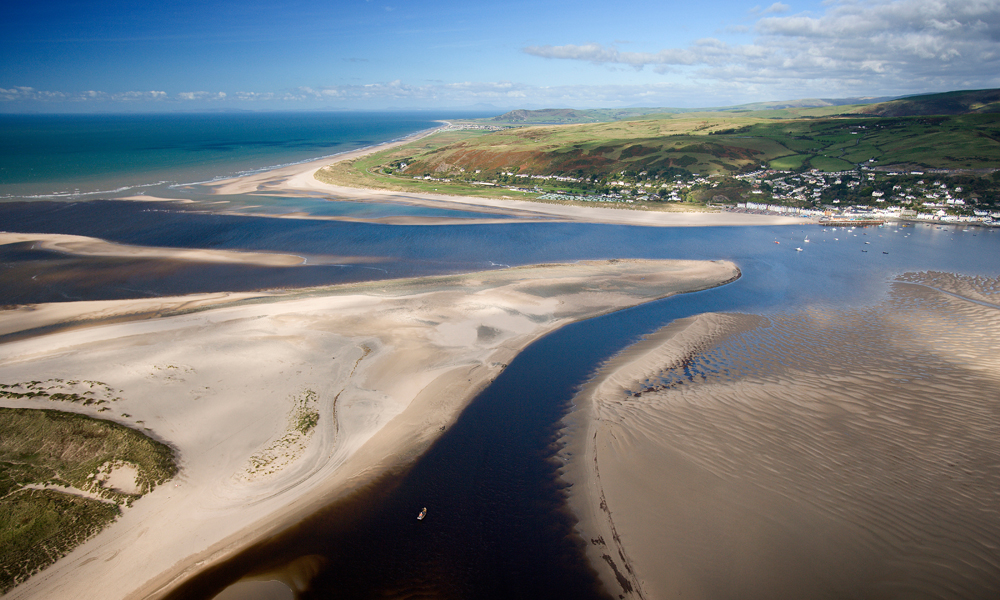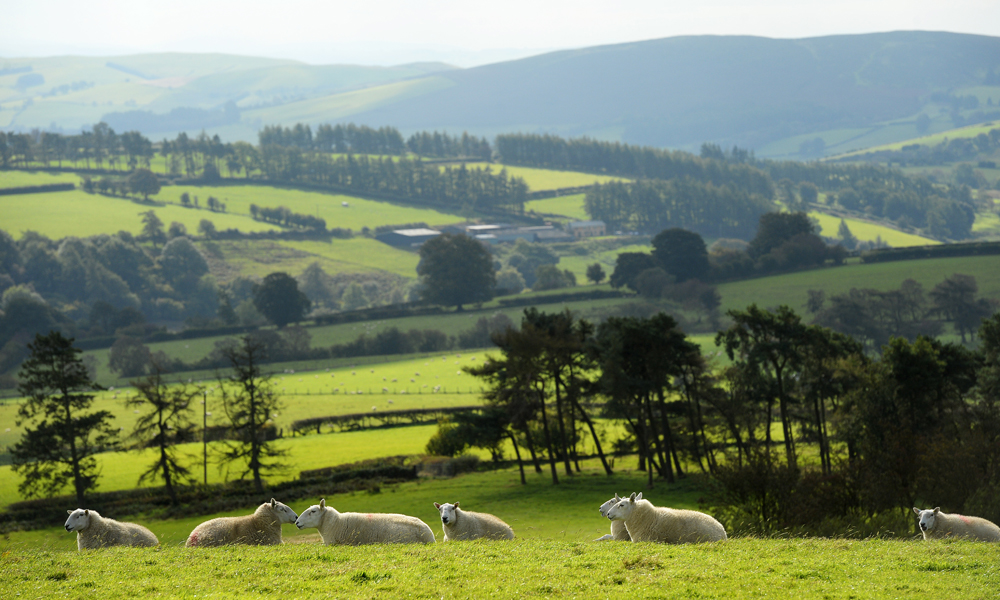With its quaint inns, hearty meals, rolling hills and natural beauty, this singularly stunning part of the world will charm your socks off…
By Doug Wallace
Seriously, I thought it was a hot springs – but it is ice cold. We’re “taking the waters” at St. Winifred’s Well in North Wales, one of the oldest pilgrimage sites in Britain. Why? Because it’s there, because it dates back to the 12th century, and because we are hardy Canadians on a road trip. Day 1 and I’ve already taken a shine to this place. And a bath.
At a time when deep-diving into your ancestry is trending, it’s only fitting that Wales feels like home: going back many centuries, my surname, Wallace, was previously Waleis and before that Wylisc, meaning “foreigner” or, more specifically, “foreigner from Wales.” No surprise, then, that I’m digging the scene.
We’re toodling along the northern coastline (with a map, of course), through the fishing villages and the little resort towns, along the strips of pale yellow and powder blue seaside hotels. At one point we pop into a mammoth church just off the main road and listen for a blissful half-hour as a pipe organist practises, the bassline rumbling in our chests. We stop at romantic Victorian seaside piers and wander the arcades and cotton candy stalls, shooing away seagulls eyeing our fish and chips. Time appears to be standing still, and a storybook sentimentality sticks with us for the whole week.
Away from the coastline and into the interior, North Wales is beyond gorgeous. We don’t drive all day, of course. Nature plays a big part of this peaceful sojourn, and immersing ourselves in it is simple via hiking and cycling, boating and paddling. There are caves to explore, trains to climb aboard and golf courses to walk. You could count the sheep that dot the rolling farmland for days and never finish; apparently, there are more than 10 million in the whole country. The hills of Gwydir Forest and Snowdonia National Park yield wide-open terrain; Snowdonia itself is 2,000 square kilometres in size. Needless to say, we fit in a long walk whenever we can.

An intrepid hiking guide leads us to Aber Falls near Abergwyngregyn one afternoon, then becomes our new best friend when she hikes us right into Aber Falls Whisky Distillery, the first one in North Wales in more than 100 years. Relatively new, it has set its sights on whisky, but while that is aging, it churns out the most tantalizing gin. There’s an orange marmalade version, and a rhubarb and ginger gin, but we latch onto their small-batch bottle, ripe with flavours that date back to Druid times: things like rowan berries and lavender.
The gin-fest continues later in the week at the Dyfi Distillery at the southern end of the parkland, where wild botanicals foraged from the nearby biosphere reserve kick up exquisite London Dry-style gins. We taste-test their summer and winter versions of small-batch bottles, sporting flavours of wild flowers and wild fruits, respectively, then fall hard for their original gin with its notes of bog myrtle, pine, juniper (of course), coriander and lemon. All this gin makes it into my suitcase somehow – marked for special occasions only – and we are delighted to find them behind the bars of our guest houses.

Wheel into the circular drive and put your feet up
The nice thing about a road trip in Wales is that come cocktail hour, touring is over, so you never have to drive in the dark. Wanderers finish their day at five, have a nap, freshen up and then enjoy the old-fashioned, country-inn hospitality. These are estate homes for lolling about, for getting lost in all the nooks and crannies, and finding the hidden paths to the pastures and fish ponds. They’re inns with updated spas, with roaring fireplaces that greet me in the lobby, with sofas so soft I can’t get out of them and landscaped rose gardens tended by people who have been doing it for decades. They are places with a summer and winter balcony. The word “quaint” doesn’t do them justice. We spend the night in a room Winston Churchill once slept in, and don’t shut up about it for weeks.
Happily, at these comfy country estates, our whole stay is anchored to my favourite thing in the world: dinner. We are stunned at every stop by the goodness we are putting in our bellies. Real. Food. Not just some city chef’s interpretation of slow food, but the real McCoy. Fresh lamb and game, and sublime seafood, particularly mussels and bass. Not only do we indulge in some of the most incredible culinary journeys we will ever make, but also in the traditions that are revealed along with the foodways, propped up by a heritage and history that isn’t stashed away in old library books but right in our faces.
Getting acquainted with the history of North Wales is easy, because it springs out of every quadrant. Almost every mile of our road trip reveals an ancient treasure. You can’t throw a stone and not hit a castle – Caernarfon and Conwy being two of our favourites. There is no shortage of curiosities here, either. We squeeze ourselves into Quay House – billed as the smallest house in Great Britain – a red-painted, two-storey one up-one down in Conwy that measures 10 by six feet. Visitors have to tour it in groups of no more than two at a time. Oddly, its last resident was a six-foot-three fisherman.

Around the corner at 16th-century townhouse Plas Mawr, we see how the wealthy lived in the Elizabethan era. It’s a rare example of a surviving and unchanged building, restored to the nines. We almost get lost wandering the 17 rooms, which include brewing, baking and dairy facilities. I freak out thinking about how many people slept in each of the tiny rooms upstairs.
The history in Wales is more than just an old story; it has informed how the Welsh are now: direct yet relaxed, and immensely proud and knowledgeable of their heritage, reclaiming it after hundreds of years of being bossed around by England. And unlike the Scottish, who have mostly lost their Gaelic, the Welsh still speak Welsh.
In the tiny oceanfront dining room at Gwesty Cymru in the university town of Aberystwyth, I tuck into my last meal in Wales – fittingly, Welsh Rarebit. Everyone’s heard of it, but few know what it is. Yes, just bread and cheese, pure and simple and satisfying, the epitome of comfort – just like Wales itself.
When you go
June to October are the warmest months for outdoor adventure in Wales, with temps ranging from 14ºC to 20ºC in the north. April to June is relatively drier than the rest of the year. There are fewer tourists in the spring and fall, which are also the most scenic. The weather is unpredictable throughout the year, and you might well see sun and light rain in one sky. Check out VisitWales.com for more details.
—
DOUG WALLACE is the editor and publisher of travel resource and podcast TravelRight.Today.







POST A COMMENT